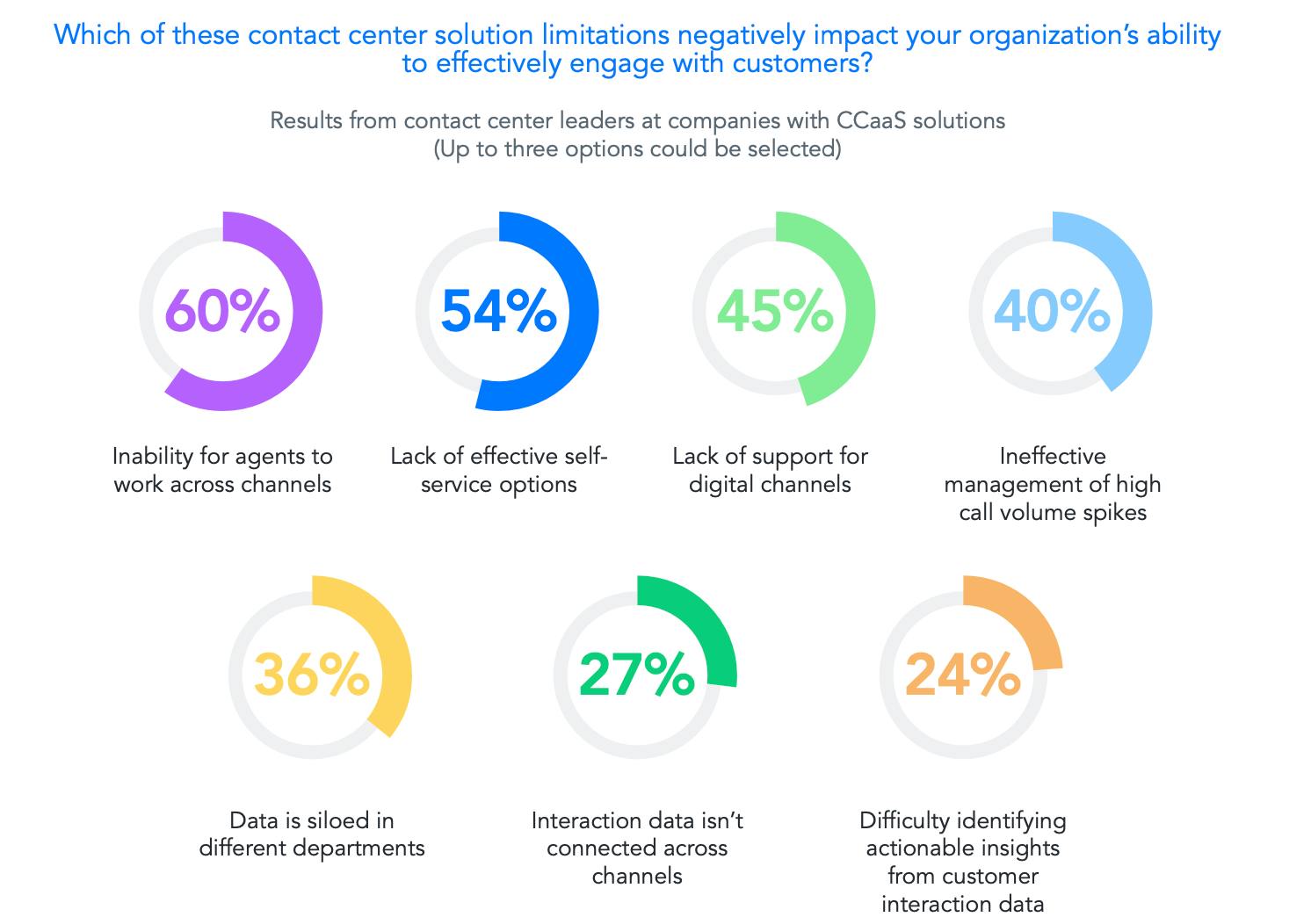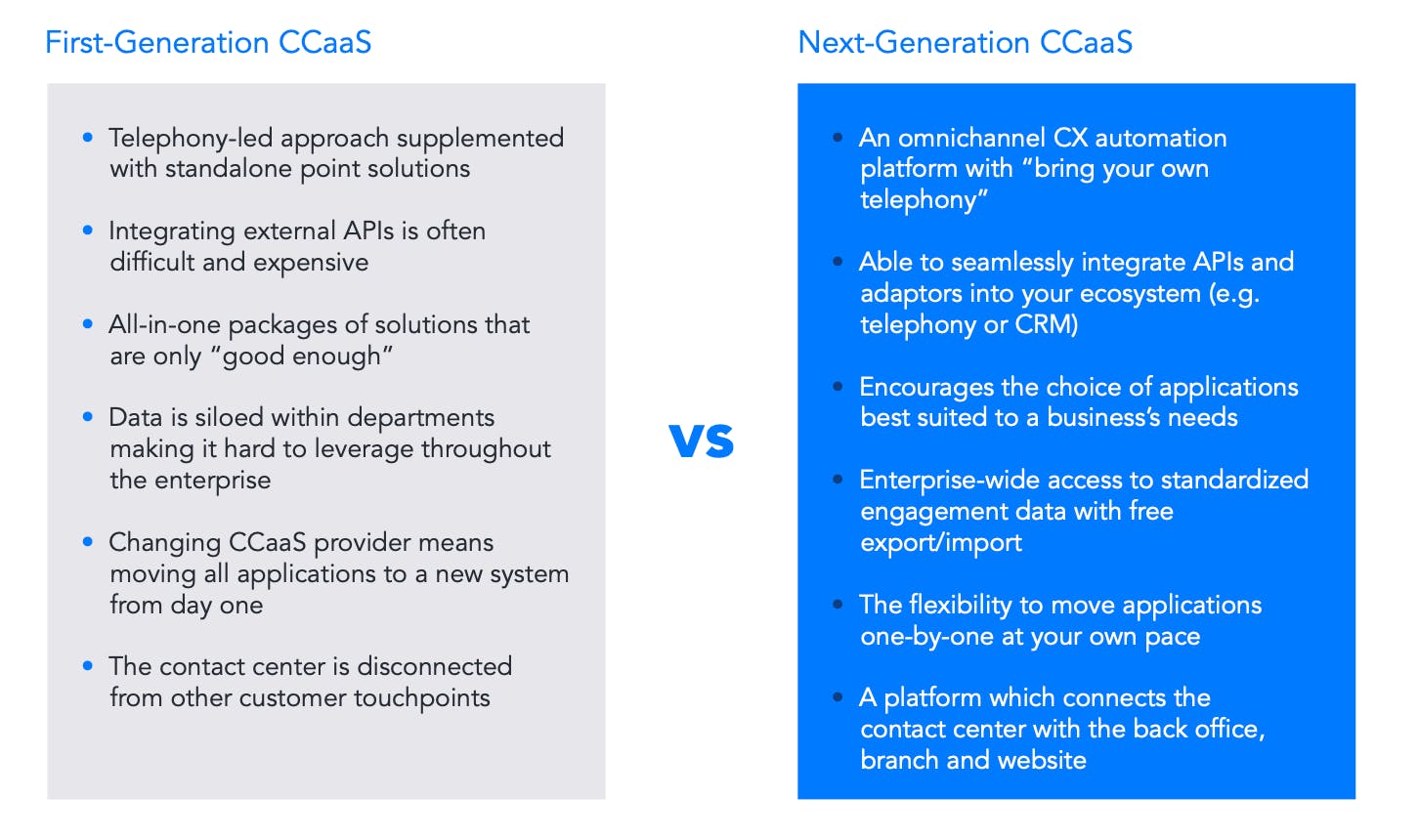Verint Research Finds CX Leaders Are Frustrated with Traditional CCaaS Platforms


The technology that drives contact centers is changing. It needs to, because the challenges facing CX executives are evolving as well.
Verint’s new report, The Open CCaaS Advantage: Future Proofing the Contact Center With CX Automation, highlights the new approach needed for modern customer engagement, as well as emphasizing the shortcomings of existing CCaaS platforms.
The research found that contact center leaders are frustrated with the capabilities of their current solutions, with many failing to provide the features required to deliver modern customer engagement.
AI Is the Driver of Contact Center Innovation
The global survey of 300 contact center professionals, from directors up to C-level executives, revealed the shifting attitudes towards what capabilities CX leaders need from their CCaaS platforms.

Only 1 in 10 think that telephony will have the biggest impact on their CX automation efforts in the next 12 months.
This shows that telephony, which was once the focal point of the contact center, should no longer be leading purchasing conversations. It’s still an important engagement channel, but one of many customer touchpoints that companies need to focus on as part of an omnichannel strategy.
Meanwhile, 53% see AI as the most influential factor on achieving CX automation over the next 12 months. This may be an issue for brands using first-generation CCaaS platforms that aren’t designed to maximize the impact of AI across an organization.
Where First-Generation CCaaS Platforms Fall Short

The ideal contact center platform eases the burden on employees by enabling them to work seamlessly across multiple channels, automates simple processes, while also offering exceptional experiences to customers. The data from our survey shows that first-generation CCaaS often does the opposite.
The shortcomings of traditional CCaaS solutions fall into three categories:
- Poor support for omnichannel strategy
- No effective mechanism for reducing strain on the contact center
- Engagement data isn’t leveraged or optimized
The old way of building a contact center strategy has left many companies unable to engage customers in the way that they expect. A reliance on telephony, with other channels added afterwards, means employees can’t work effectively across digital touchpoints.
Without AI at their core, current CCaaS platforms can’t utilize automation to scale self-service and manage volume spikes. Also, if customer data remains siloed between departments or channels then it’s much more difficult to deliver personalized experiences or achieve first-contact resolution.
If traditional solutions aren’t suitable for the demands of modern CX, then a new way of doing things is needed.
Openness Will Define Next Generation CCaaS
Contact center leaders are constantly under pressure to do more with less. To achieve this, there needs to be a focus on ‘open’ solutions which increase automation and elevate CX across every customer touchpoint, while at the same time, lowering operating costs.
Due to their closed nature, this isn’t possible with first-generation platforms.

The next generation of CCaaS platforms has an open approach to AI, data and ecosystem—enabling CX automation through bots working alongside humans on a wide range of engagement channels.
—-
Verint’s Open CCaaS Advantage report details the frustrations felt by CX leaders with their current CCaaS solutions and offers a blueprint for building an open customer engagement platform.
Download your free copy of the report and discover why the future of CCaaS is open.